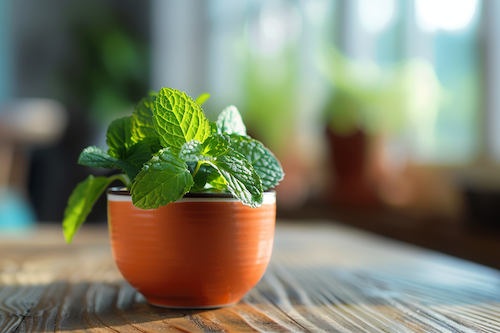Peppermint for PCOS
Peppermint for PCOS
Peppermint for PCOS

Peppermint oil may help reduce excessive hair growth (hirsutism), a common PCOS symptom. A study suggested that applying diluted peppermint oil to the skin can decrease hair growth in affected areas.
Peppermint oil is renowned for its cooling effect and refreshing scent, making it a popular choice in aromatherapy and natural health practices. Interestingly, it has also been considered for managing hirsutism, which is excessive hair growth, a symptom often associated with PCOS. While direct scientific evidence supporting peppermint oil's effectiveness in reducing hair growth due to PCOS is limited, its use is backed by anecdotal evidence suggesting potential benefits. Peppermint oil's properties might help soothe the skin and reduce the appearance of unwanted hair when used consistently as part of a topical application regimen.
To incorporate peppermint oil for hirsutism management, it's recommended to dilute the essential oil with a carrier oil, such as jojoba or coconut oil, before applying it to the skin. This not only ensures the safe use of the essential oil but also maximizes its potential benefits for the skin. A patch test is advised to check for any allergic reactions before regular use. As with all alternative treatments, it's best to consult with a healthcare provider to determine the most appropriate approach for managing PCOS symptoms.
The mechanism behind peppermint oil's impact on hair growth is thought to involve its anti-androgenic properties. Androgens are hormones that can increase hair growth, and their elevated levels are often associated with PCOS. By potentially blocking the action of these hormones on hair follicles, peppermint oil may slow down the rate of hair growth, providing a natural approach to managing this challenging symptom.
For those considering peppermint oil as a natural remedy for hirsutism, it's essential to use it correctly to ensure safety and effectiveness:
- Dilution: Always dilute peppermint oil with a carrier oil (such as jojoba or sweet almond oil) before application to the skin. A general guideline is to add a few drops of peppermint oil to a larger amount of carrier oil, ensuring the mixture is gentle enough for your skin.
- Patch Test: Before applying the mixture broadly, perform a patch test on a small area of your skin to ensure you do not have an adverse reaction.
- Consistent Application: For the best results, apply the diluted peppermint oil mixture to the affected areas consistently, following the guidelines suggested by the study or a healthcare professional.
While the study's findings are promising, it's important to approach this treatment with realistic expectations and to consult with a healthcare provider before starting any new remedy for PCOS-related symptoms. They can offer guidance based on your individual health needs and help you integrate natural treatments into your overall management plan for PCOS.